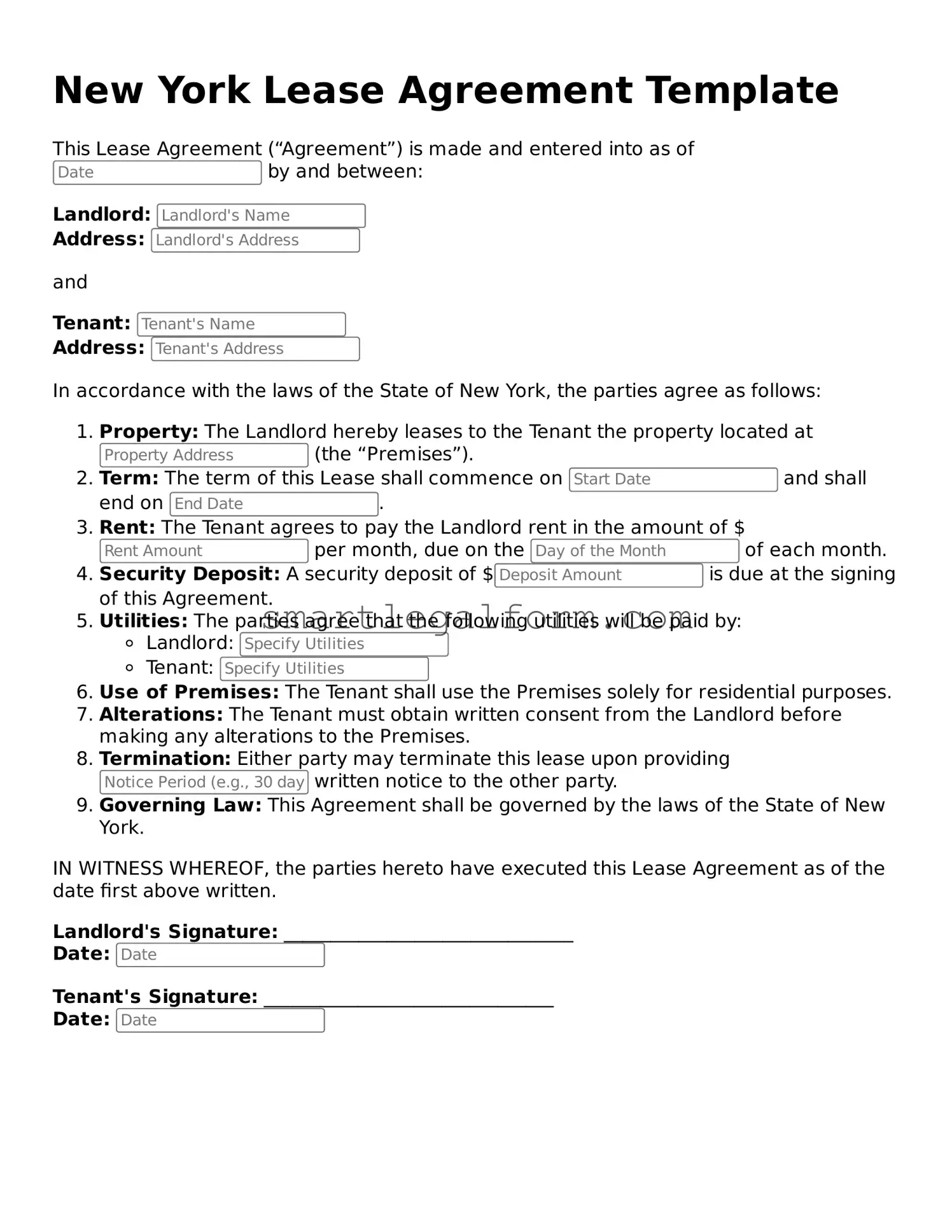Printable New York Lease Agreement Document
A New York Lease Agreement is a legally binding contract between a landlord and a tenant that outlines the terms and conditions of renting a residential property in New York. This essential document protects the rights of both parties while ensuring clarity regarding payment, duration, and responsibilities. To get started with your own lease agreement, click the button below to fill out the form.
Fill Out Your Form Online
